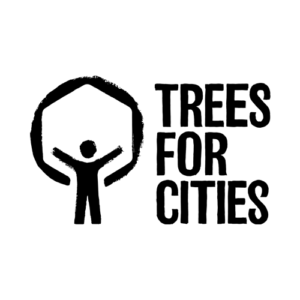Undoubtedly, one of the most wonderful benefits of living close to trees is witnessing the wildlife that starts to inhabit the local area. It really doesn’t take very long to start to see some new neighbours moving in, albeit ones with feathers and fur.
The benefits of living close to nature have been well documented elsewhere, and it’s something that nearly everyone can appreciate. The sense of connection to nature is so important for our wellbeing, with research increasingly showing the benefits to our mental health. And the fun of spotting different types of birds or small mammals is exciting for both the young and the old!
In this post, we’ll look at some of the best trees that can create an attractive habitat for nature in an urban area.
Just one tree makes a big impact
Just one tree can support hundreds of different organisms:
- Birds nest in their branches
- Spring blossom attracts pollinating insects
- Fruit and nuts provide food for birds and small mammals, and
- Lichen grows on the trunk as the tree ages.

As a tree ages, the species it supports change too.
Older trees develop small nooks that provide shelter for animals like squirrels and bats.
Trees also support a much wider ecosystem encompassing fungi and soil-inhabiting organisms like bacteria that help support the health of the tree.
Street trees are a unique haven for wildlife
Trees in an urban environment attract a rich variety of wildlife, but it might surprise you to know that they can be even more beneficial than trees in forests!
This is because when trees start to die, they can’t support their upper branches – in a ‘closed-environment’ like a forest environment they quickly become out shaded by their neighbours.
But in an ‘open-environment’ like an urban street, the rate at which a tree dies is much slower, meaning it can support wildlife for much longer.
Urban wildlife needs our support
As our world becomes increasingly urbanised, it brings new challenges to wildlife who struggle to make their homes in our towns and cities.
They have to battle with road traffic, pollution, artificial light, noise and a loss of habitat – to name just a few of the challenges they face.
But despite this, some animals have adapted well to living alongside humans and can thrive in urban areas with the right conditions. Some wild animals are known as ‘synanthropic’ meaning they do best when living close to humans.
What wildlife can you expect to see?

Birds
Birds are of course the most common animal you’d expect to see living in trees. Urban trees can support habitats for many different types of birds. Robins, Starlings, Blackbirds, Blue tits and Great Tits are all common birds that can be spotted nesting in urban street trees. Sparrows are another common sight, but unfortunately, they are in decline in some areas.
Birds eat worms, snails, insects and other minibeasts that they can find living in trees and nearby gardens.
Grey Squirrels
Squirrels build a nest in treetops or hollow tree trunks and are active all year round. They feed on nuts, berries, insects, buds and even bark. Sometimes they will even eat insects or small rodents.
Bats
Mature trees are vital for bats, one of our most endangered mammals. Bats have big appetites and like to feast on insects to fuel all the flying they do at night. Some species eat tree fruits too. They roost in hollow trees and of course use them as landing places while searching for prey.

Bees and hoverflies
Bees and other insects are essential for pollination and our entire ecosystem depends upon them! They are adversely affected by the loss of habitat that is occurring worldwide.
Flowering tree species, like cherry and crab apple, can provide them with both nectar and a place to rest.
Moths and Butterflies
Also important pollinators, these insects are suffering from loss of habitat across the UK. Spotting different types is a great way to get children interested in nature and is a fun activity for adults too.
Street tree planning
All trees attract wildlife, but in an urban area, some things need to be considered carefully.
Firstly, some trees are more suitable for streets than others. Space is always an issue in urban areas, so the final height and size of the root system is an important consideration. So although they can be a cosy home for many birds and mammals, oaks and horse chestnuts are rarely planted on a narrow urban street!
And as our climate continues to get warmer, planting a mix of both native and non-native trees is necessary to support wildlife through the coming decades.
Insects and other animals have evolved to thrive on the sap, fruits and nuts of native trees – these trees support lots of different species. While non-native trees allow us to have a greater diversity of trees that cope very well with drought and high temperatures, some exotic varieties also attract high numbers of birds.
The important thing is to plant a range of trees to support the wider ecosystem. Read more about how the right tree is chosen for each location.
Wildlife-friendly street trees
Trees that flower and produce nuts are an important source of food for many different types of wildlife. Evergreen trees provide shelter and respite throughout the cold winter months for birds, insects and mammals.
Some examples of trees that attract wildlife are:
Trees that bear nuts and fruits
- Hazel
- Crab apple
- Wild cherry
Trees with winter berries
- Holly
- Rowan
Flowering trees:
- Silver Birch
- Ginkgo biloba
- Plane Trees
There are many things that we can do to attract wildlife and to make it easier for them to survive. Planting more street trees is just one of these!


